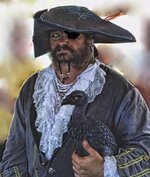IlRagazzoPirata99
Newbie
10 jan 2021
In 1949, those papers ended up in the hands of Reginald Cruise-Wilkins, father of John, an Englishman who had moved to the Seychelles and who has since been obsessed with searching for the pirate's treasure. When Reginald died, the treasure hunt was continued by his son. And he is now convinced that he has finally identified the place where it is hidden, thanks to the map and various traces found on the spot: an anonymous piece of road in the northern part of Mahé, the main island of the archipelago.
In 1949, those papers ended up in the hands of Reginald Cruise-Wilkins, father of John, an Englishman who had moved to the Seychelles and who has since been obsessed with searching for the pirate's treasure. When Reginald died, the treasure hunt was continued by his son. And he is now convinced that he has finally identified the place where it is hidden, thanks to the map and various traces found on the spot: an anonymous piece of road in the northern part of Mahé, the main island of the archipelago.




